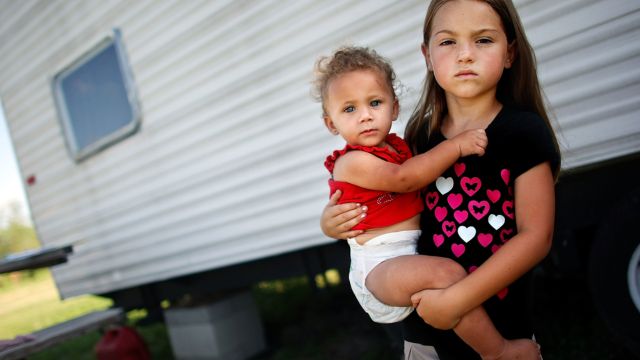According to a recent assessment from the state comptroller’s office, upstate communities have among of the highest rates of child poverty in the country; in Buffalo, Rochester, and Syracuse, between 40 and 46 percent of children were estimated to be living in poverty in 2022.
According to the survey, the three cities—whose rates of child poverty among large U.S. cities were placed second, fifth, and seventh—saw twice as many children living in poverty as the average for cities with comparable populations. Additionally, it was discovered that approximately thirty percent of Albany’s youth live in poverty.
The rate of child poverty in New York City is twenty-three percent. Bronx, Kings, Broome, and Chautauqua counties have the highest rates of child poverty in all of New York.
With a rate 2.5 percent higher than the national average, roughly one in five children in New York live in poverty, ranking the state in the top 10 in the nation for child poverty. Thomas DiNapoli, the state comptroller, described the figure as “staggering.”
The rates of child poverty in the states that border New York are at least 6% lower than those in the city. Only Texas, one of the most populated states, has a rate higher than New York’s.
In order to address the issues that impoverished children encounter, which he claims creates “serious barriers to healthy child development,” DiNapoli is advocating for increased government engagement. Weeks after DiNapoli’s office discovered that almost one in nine New York homes experience food insecurity—which disproportionately affects children—the study was released.
In 2022, the pattern of greater rates of poverty for children under five years old was reversed, with the study indicating that children between the ages of five and seventeen had higher rates of poverty than younger children.
Both the national and New York child poverty rates in 2012 hovered around 22.8 percent. The national rate dropped to around 16 percent by 2022 in the ensuing ten years, while New York’s rate dropped to little under 19 percent in the same time frame.
According to the comptroller’s report, the coronavirus epidemic, which caused economic instability across the nation, prompted “relief measures” that helped address childhood poverty, such as stimulus funding, higher child tax credits, expanded food programs, and emergency housing grants.
According to a statement from DiNapoli, “child poverty dropped by half because the government expanded programs to help families and children, despite unstable economic conditions during the pandemic.” “The issue worsened after these measures expired.”
While pre-pandemic child poverty rates were cut in half by pandemic-era initiatives, the research states that once the relief measures ended, the rate more than quadrupled and reached higher levels than pre-pandemic rates.
“We should act with urgency to use the solutions that the federal and state governments have to lift more children out of poverty,” stated DiNapoli.
The report cited the recent addition to the state budget of the permanent increase of the Empire State Child Credit, which includes children under the age of four who were previously not eligible. Parents of children under 17 who make $75,000 or less annually, if filing as a single taxpayer, or $110,000 or less annually, if filing a combined return, are eligible for this benefit.
The study also discovered that investments in child care subsidies and recently implemented hikes to the minimum wage may help lower the rate of child poverty.
The analysis came to the conclusion that since children who do not experience poverty are probably healthier and more educated, investing more money in reducing childhood poverty will yield “a substantial return on investment.” Research indicates that alleviating poverty can result in reduced government spending on issues related to the criminal justice system and long-term health care.
In addition, the comptroller’s office cited the efforts of the Child Poverty Reduction Advisory Council, which was founded after the Child Poverty Reduction Act was passed in December 2021 and whose objective is to reduce child poverty by half in ten years.
The research states that increased federal and state investment in children should be prioritized and put into action, even though lawmakers are trying to address this issue.
When creating plans to address the issue, the report advises officials to “be guided by the time-sensitive nature of this problem and the high concentrations of child poverty in certain communities in the state.”

